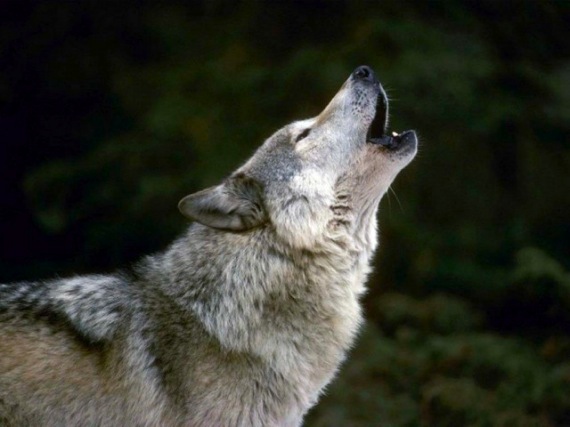The lawsuit was prompted by a decision by FWS to delist the gray wolf in Montana and Idaho but leaving it protected in Wyoming. While that might have been a “pragmatic” solution to the difficult issue of protecting wolves in an area where many residents oppose such a status, it’s not lawful to do so, Molloy ruled.
This ends a practice initiated by the Bush Administration to partly delist species, ignoring factors like total population in the entire ecosystem. Groups like the Alliance for the Wild Rockies, one of several conservation groups initiating the lawsuit, argue that delisting must be done when considered on the broader level.
Still, this may not be the total victory that wildlife advocates assumed. The whole issue arose when Wyoming officials decided they could not go along with Montana and Idaho guidelines for wolf management; Wyoming wants to reserve more aggressive management techniques; i.e., giving citizens and officials more opportunities to kill what they consider “problem” wolves in a wider variety of situations. The decision by FWS was designed to give the Feds more oversight in Wyoming to protect the species.
In the short term, the decision will bring all the major stakeholders to the table, forcing the three states to agree on guidelines where wolves can be killed. On a more pragmatic level, the fall wolf hunt in Montana and Idaho is scrapped with protections initiated again in those two states.
Here’s the official response from Assistant Secretary of the Interior for Fish and Wildlife and Parks Tom Strickland:
“For more than 15 years, the U.S. Fish and Wildlife Service, state wildlife agencies, tribes, conservation organizations, ranchers and other landowners have worked hard to recover gray wolves in the Northern Rocky Mountains. Our collective efforts have brought this population to the point where it no longer requires Endangered Species Act protection.
“Despite this extraordinary success, today’s ruling means that until Wyoming brings its wolf management program into alignment with those of Idaho and Montana, the wolf will remain under the protection of the Endangered Species Act throughout the northern Rocky Mountains. Since wolves in the Northern Rocky Mountains are now again subject to ESA protection, in the days ahead we will work closely with Idaho and Montana to explore all appropriate options for managing wolves in those states.
“Reintroduced from Canada, in the mid-1990s, to remote areas of central Idaho and Yellowstone National Park, the wolf population flourished and reached sustainable recovery levels as early as 2002. It has continued to grow and has now far surpassed these recovery plan targets.
“The Service’s decision to delist the wolf in Idaho and Montana reflected the strong commitments from the states of Idaho and Montana to manage gray wolves in a sustainable manner. Today’s ruling makes it clear this wolf population cannot be delisted until the State of Wyoming has instituted an adequate management program, similar to those of Idaho and Montana.
“In the meantime, we will continue to work closely with the states, tribes, conservation organizations, and ranchers and other landowners to manage wolves and ensure the species continues to thrive and coexist with livestock, other wildlife populations, and people.”
RELATED STORIES: Yellowstone Wolf Numbers Down To Lowest Levels Since 1999; NPS Calls Dive “Natural”
We’ve also set up a free Twitter account so you can receive updates on the device of your choice.
 Yellowstone Insider Your Complete Guide to America's First National Park
Yellowstone Insider Your Complete Guide to America's First National Park





